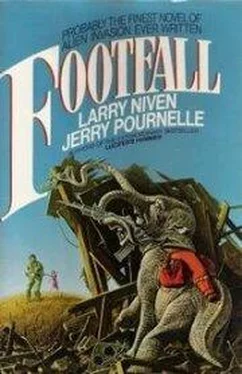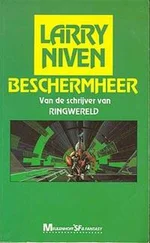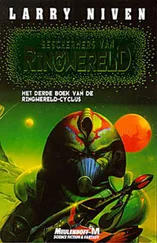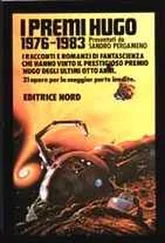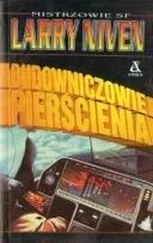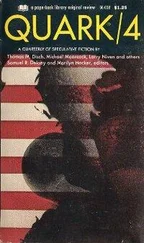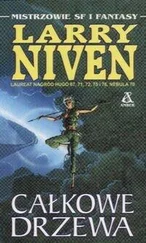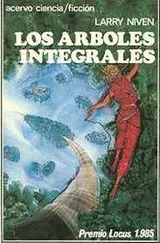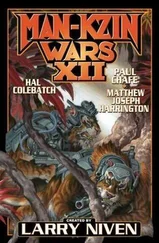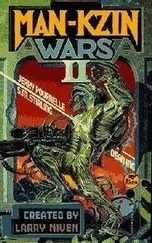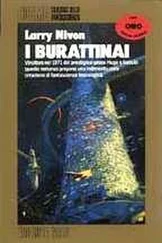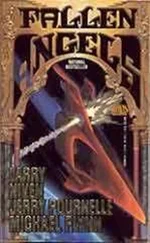They’d spent the past days learning about U.S. and Soviet weapons. Now it was time to examine what was known about the aliens.
Not that there’s anything to know. Our best photos don’t show details. Just that it’s damned big.
One of the men, the one with the heavy mustache, began before she could. “Major Crichton, I assume that the government has been no more successful in communicating with the aliens than all the private attempts were?”
“Correct. We’ve tried every means of communication we can think of.”
“And a few no one would have thought of,” Sherry Atkinson added. They all laughed, remembering that the mayor of San Diego had persuaded the citizens of his city to blink their lights on and off while they were in the alien ship’s view.
“With no result,” Jenny said. “Our best prediction is that the alien ship will arrive day after tomorrow. Sometime day after tomorrow. We can’t predict it closer than that, because the ship has begun random acceleration and deceleration.”
“As if it didn’t want us to know the precise ETA,” Curtis said.
“ETA?” Atkinson asked.
“Estimated Time of Arrival” Jenny said. “And yes, we’ve thought of that.”
“It might be their engines aren’t working properly.” Atkinson looked thoughtful. “Or that the concepts of time and regularity don’t mean much to them.”
“Bat puckey,” Curtis said. “If they’re space travelers, they have to have clocks.”
“Doesn’t mean they use them,” someone said.
Jenny spoke through rising voices. “Lieutenant Sherrad will review what we know.” The chatter stopped.
Sherrad was a Regular Navy man hoping for his bad foot to heat so that he could go back to sea. Jenny wasn’t quite sure how he’d been assigned to Colorado Springs, but she did know the Admiral thought well of him. His father had been a classmate.
The Navy seemed to have even more of that sort of thing than the Army. He ran new blowups of films taken by the Mauna Kea telescopes as far back as the late l970s. A few showed a flickering star that must have been the alien ship, although at the time no one had realized it.
Sherrad showed each film in sequence. Then again. He brought the lights up and waited, as if teasing the audience.
“Son of a bitch.”
“What, Joe?”
“It dropped something.”
Sherrad nodded. “It does look that way.”
It took me four hours to see that, Jenny thought. Maybe there is a good reason to have these birds here-.
“Our best guess is that it came from the southern region of the Centaur, dropped something heavy, rounded the sun, and went to Saturn,” Lieutenant Sherrad said. “Decelerating all the way.”
“They knew where they were going, then.”
“Well, Dr. Curtis, it does seem so.”
Jenny nodded approval. Sherrad had memorized the doctorates.
Voices arose from one of the clumps. “Okay, they refueled at Saturn—”
“Why not Jupiter?”
“It takes less delta-V to slow down for Saturn. Jesus, but they must have been going on the last teacup of fuel for that to matter!”
“Jupiter could have been around on the other side—”
“Could we see it again?” Anson asked.
Sherrad waited until they were quiet. “Certainly. We also have the computer simulation.”
The room darkened again.
Black dots speckled a white field: a negative of the night sky. Astronomers generally preferred to use negatives; it was easier to see the spots that were stars. The scene jumped minutely every few seconds. The stars stayed where they were-the photographs had been superimposed-but one dot jumped too, and grew Larger.
“These were taken from Mauna Kea observatory. Notice the point that jumps. When we realized what we had, we made same graphs—”
The first showed a curve across the star background, not very informative.
“And this is what it would look like from above the Sun’s north pole.”
Three faintly curved lines radiated from a central point. Near that point, the sun, they were dotted lines-of course, no camera would have seen anything then-and they almost brushed the solar rim. The Navy man’s light-pointer traced the incoming line. “It came in at several hundred miles per second,” he said, “decelerating all the way. Of course the Invader wasn’t seen near the sun, and nobody was even looking for it then. This—” The light-pointer traced a line outward. “We have only three photos of it, and of course they could be artifacts, garbage. If they’re real, then this one wasn’t under power when it left the sun. It was dropped.” The third line ran nearly parallel to the second, then curved away. ‘This section was under power, and decelerating at around two gravities, with fluctuations. We’ve got five photos, and then it’s lost, but it might well have been on its way to Saturn.”
“Not good,” said a voice in the dark.
The lights came on. The Navy man said, “Who said that?’
“Joe Ransom.” He had a gaudy mustache and the air of self-assurance the SF writers all seemed to share. “Look: they dropped something to save fuel. Could have been a fuel tank—”
“I’d think it was a Bussard ramjet,” someone interrupted.
Ransom waved it away. “It almost doesn’t matter. They dropped something they needed to get here. They probably planned to. Odds are they didn’t take enough fuel to stop inside the solar system without dropping-well, something massive, something they didn’t need any more, something that served its purpose once it got them from Alpha Centauri or wherever. If—”
Burnham jumped on it. “A Bussard ramjet wouldn’t be any use inside the solar system. You need a thousand kilometers per second to intercept enough fuel-or there are some alternate versions, but you still—”
Ransom rode him down. “We can’t figure out what it was yet and we don’t care. They used it to cross, and then they dropped it. Either they figure to make someone build them another one, or they’re not going home. You see the problem?”
Something icy congealed in Jenny’s guts. They don’t expect to go home. Maybe a Threat Team isn’t such a bad idea. I’ll have to call the Admiral.
Meanwhile, the meeting was degenerating into isolated clumps of conversation. Jenny spoke up to resume control. “Enough!” The noise dropped by half. “Mr. Ransom, you said Alpha Centauri. Why?”
“Just a shot in the dark. It’s the three closest stars in the sky, and two of them are yellow dwarfs, stars very like ours.”
“Stars?”
“Yes. What we call Alpha Centauri, meaning the brightest star in the Centaur constellation, is really three stars: two yellow ones pretty close together, and one wretched red dwarf.”
“Our own sun’s a yellow dwarf,” Curtis said.
“Interesting,” Lieutenant Sherrad said. “Our astronomers say the object came from the Centaur region. Is Alpha Centauri really a good prospect?”
The meeting came apart again. This time Jenny let it ride for a bit. Her patience was rewarded when Curtis bellowed, “May I have a consensus? Who likes Alpha Centauri?”
Two hands went up.
“Who hates it?”
Three hands. And three undecided.
“Sherry? Why don’t you like Alpha Centauri?”
“Wade, you know how many other choices there are! There are almost a dozen yellow dwarf stars near us; and we don’t know they came from that kind of star anyway!”
“Bob? You like it.”
The wide white-haired man with the gaudy vest laughed and said, “I didn’t at first it’s trite. But, you know, it’s trite because it got used so much, and it got used so much because it’s the best choice. Why wouldn’t they go looking for the closest star that’s like their own? And, Sherry, there aren’t many yellow stars in that direction. That clump centers around Procyon and Tau Ceti and—”
Читать дальше
